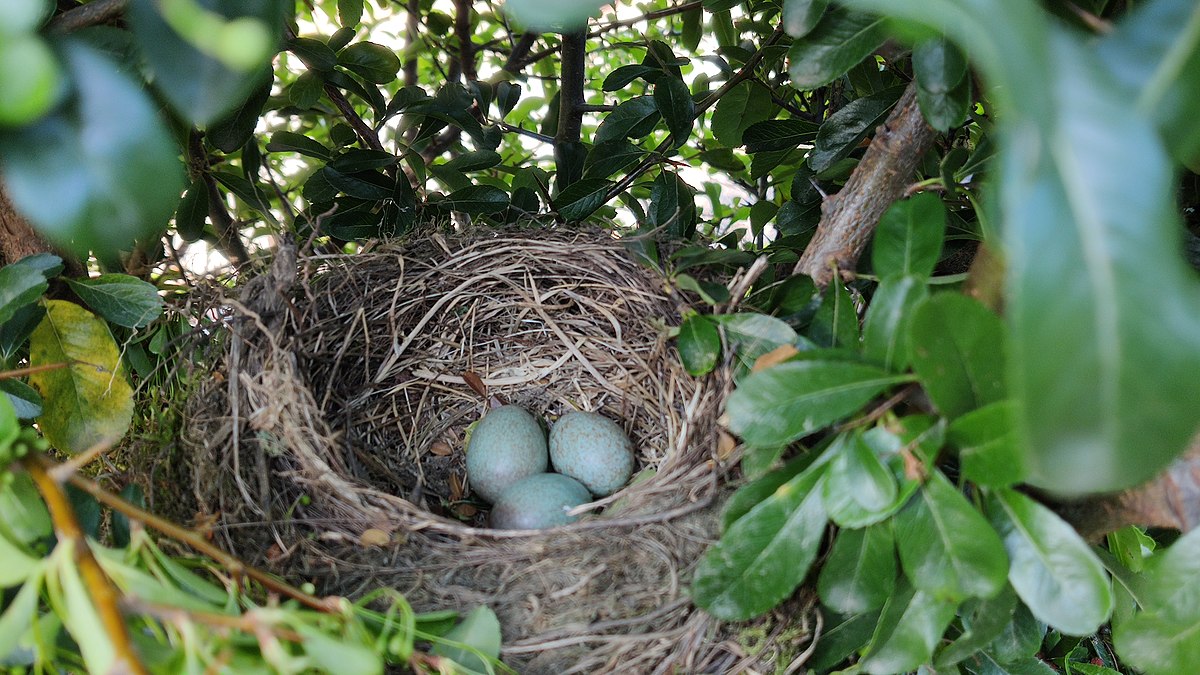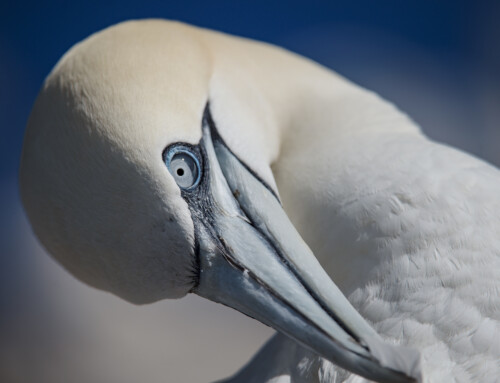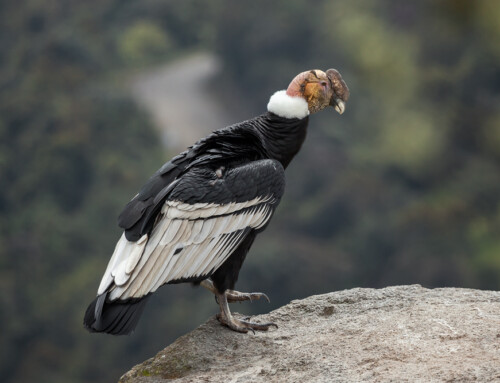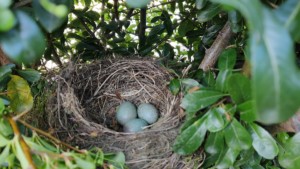 LINKED PAPER
LINKED PAPER
Evaluation of disruptive camouflage of avian cup‐nests. Mulder, T., Campbell, C. J., & Ruxton, G. D. 2021. IBIS. DOI: 10.1111/ibi.12848. VIEW
Birds use a wide variety of tricks to deceive nest predators and keep their eggs safe. In some species, the incubating parents are so well camouflaged that they blend in with the surrounding landscape (Troscianko et al. 2016). Think of the brownish Nightjar (Caprimulgus europaeus) that builds its nest on the ground and is almost undetectable between shrubs and stalks. Another successful strategy is to camouflage the eggs themselves (Gómez et al. 2018). Nest predators will have a difficult time finding the eggs when they are nearly indistinguishable from underlying substrate. Both camouflage strategies are examples of background matching where the color of the parental birds or the eggs closely matches the background. Another option is disruptive camouflage in which a high contrast between a bird or an object disrupts its silhouette and confuses potential predators (Nokelainen & Stevens 2016).
Hypothesis
Although the concept of disruptive camouflage sounds counterintuitive, it could help birds to hide their nest. Hansell (1996) hypothesized that pale or white colored objects, such as spider cocoons, lichens and human-made materials on cup nests could result in disruptive camouflage. A recent study put this hypothesis to the test with several experiments. First, the researchers collected twenty-six nests from the field at the end of the breeding season. Half of these nests were artificially camouflaged with white objects. Next, all nests were placed in shrubs and trees, and baited with a single quail egg. Two days after placement, the researchers checked which of these nests were predated most. In contrast to the hypothesis of Hansell (1996), there was no difference in predation rate between artificially camouflaged (27.5%) and uncamouflaged (26.4%) nests.
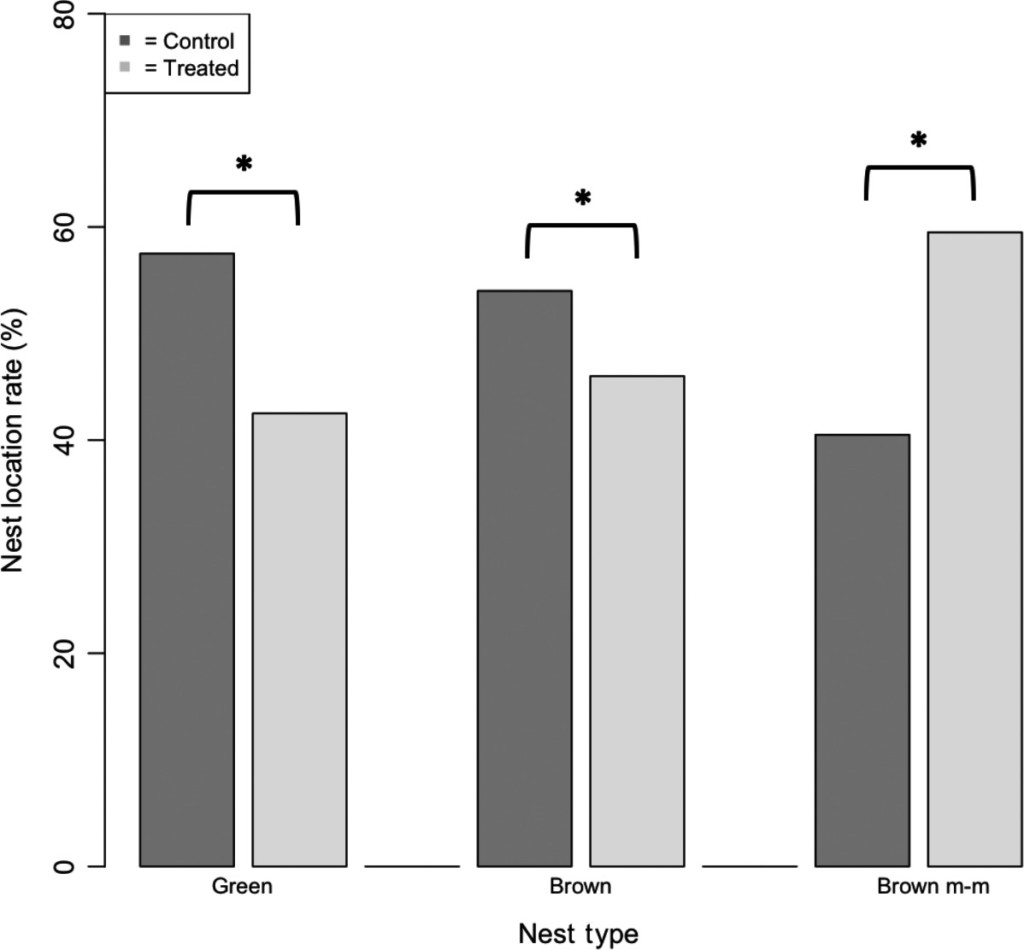
Figure 1. An experiment with pictures of bird nests showed that humans have more difficulty finding nests with white additions (light grey bars) compared to natural nests (dark grey bars). However, the opposite effect was apparent when using human-made nests (right columns: Brown m-m).
Pictures
In a second experiment, the researchers took pictures of several artificially camouflaged and uncamouflaged bird nests. These pictures were then presented to 94 human volunteers that tried to locate the nests as quickly as possible. This experiment revealed that humans had a more difficult time locating nests that were camouflaged with white objects compared to natural nests without white additions. Disruptive camouflage seems to fool humans. The contrasting conclusions from the predation experiment and the picture experiment can be explained by numerous factors, but the main reason could be the large differences between the natural situation in the field and artificial circumstances of staring at pictures. In the field, avian nest predators, such as Jays (Garrulus glandarius) and Magpies (Pica pica), can rely on other (visual) cues to locate nests, while humans were restricted to a single unmoving picture. In addition, the visual sensitivities of birds and humans might be too different to compare directly. More field observations and experiments are thus needed to determine how disruptive camouflage and background matching interact to hide bird nests in plain sight.
References
Gómez, J., Ramo, C., Troscianko, J., Stevens, M., Castro, M., Pérez‐Hurtado, A., Liñán‐Cembrano, G. & Amat, J.A. (2018). Individual egg camouflage is influenced by microhabitat selection and use of nest materials in ground‐nesting birds. Behavioral Ecology and Sociobiology 72: 1– 10. VIEW
Hansell, M.H. (1996). The function of lichen flakes and white spider cocoons on the outer surface of birds’ nests. Journal of Natural History 30: 303– 311. VIEW
Nokelainen, O. & Stevens, M. (2016). Camouflage. Current Biology 26: 654– 656. VIEW
Troscianko, J., Wilson‐Aggarwal, J., Stevens, M. & Spottiswoode, C.N. (2016). Camouflage predicts survival in ground‐nesting birds. Scientific Reports 6: 1– 8. VIEW
Image credits
Top right: Nest of a Blackbird (Turdus merula) | Paulu | CC BY-SA 1.0 Wikimedia Commons
Blog posts express the views of the individual author(s) and not those of the BOU.
If you want to write about your research in #theBOUblog, then please see here


